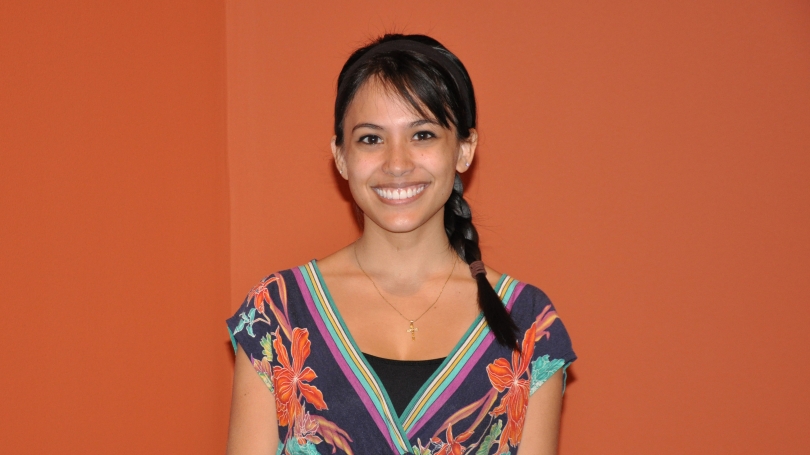Curatorial, Class of 1954 Intern
About Karysa
As an Art History modified with Medieval and Renaissance Studies major, Karysa Norris (pronounced Theresa with a K) is, as she says herself, "absolutely committed to pursuing a career in the art museum world." Prior to working at the Hood, Karysa spent the summer working at the Smith College Museum of Art, where she reaffirmed her affinity for institutions like the Hood that emphasize education in their mission. She hopes to pursue a career in the museum field doing curatorial and educational development.
At the Hood
Currently, Karysa is working with Bart Thurber, Curator of European Art, to develop an iPad app for Dartmouth College's Orozco mural in the Orozco Room of the Baker-Berry Library. Karysa is organizing the preparatory drawings by various panels and ensuring the homogeneity of the nomenclature across the captions. According to Karysa, it's been enriching and fun to become so intimately familiar with the murals, as she has spent hours in the Orozco Room comparing the artist's sketches to the final product. Overall, she finds the project extremely exciting in the way it is exploring an entirely new territory that fuses art and technology to enhance the experience for the viewer.
She has been delighted with the pace of work at the museum, though it is a little daunting at times. She looks forward to continuing to engage with the Hood's collection, especially with objects that are not frequently displayed. Working at the Hood has been an extraordinary experience, she reflects, and well worth it!
A Space for Dialogue
Continuity of the Spiritual: Old and Modern Masters
While working on the projects described above, Karysa was also in charge of coming up with her own exhibition—meeting rigorous deadlines, accomplishing all required research, and creating all the content from labels to a brochure. She came about her topic with help from her mentor, Bart Thurber, as well as her own passion and interests: "I had no idea coming into this internship what my show would be about, so Bart gave me the books in the Highlights from the Hood Museum of Art series to look through and I just made a list of works that grabbed me."
Her choice of pieces speaks to her major. The Viola piece resonated strongly with Karysa as she is intrigued by the challenge of making art from the medieval and Renaissance periods relevant to audiences today. Based on the premise of medieval and Renaissance rhetoric in contemporary art, Karysa found the rest of her works as well, though it wasn't easy, as there were some difficulties with content and with fitting her show into the space provided. By the time she settled on her pieces, Karysa went through five different iterations, and the Viola piece was the only constant! Karysa reflects how she had to learn some flexibility during the process, as she was convinced that her theme would not be strong enough without her original chosen works. She ultimately realized that the Trevisani, for example, actually worked well with her theme, and now she cannot imagine her show without them.
A highlight from her research was her insight into the development of Kandinsky's oeuvre, from the figural to the abstract, as Karysa is not a huge fan of abstract art. Though it is not Karysa's focus in her talk, she pointed to this new knowledge as an additional benefit of her Space for Dialogue process. Karysa encourages anyone who is interested in modern concepts of spirituality outside of a religious context to check out Kandinsky's works.
Read a PDF of Karysa's brochure.
